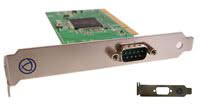
How much of the internet do IoT devices actually need? Surprise: It's not what you think
By Max BurkhalterNovember 8, 2022
The rise of the internet of things (IoT) is directly related to the increase in technological advancements. The world has gone digital and the need for faster, smarter and more accurate technologies has advanced exponentially. And this is where IoT comes in – it provides businesses with tools that can fulfil these requirements efficiently without any human intervention. But how much internet connectivity do these enabled devices actually need?
Read on to learn more about what IoT-specific protocols are, and whether they require the internet at all.
What are IoT devices made up of?
The internet of things (IoT) is a network of physical devices, vehicles, home appliances and other items embedded with electronics, software, sensors, actuators and connectivity that enables them to collect and communicate information. This network ability or exchange of data doesn't require the internet.
One of the most common misconceptions about IoT devices is that they need to be connected to the internet to function. This isn't true. The internet is only one way that an IoT device communicates with other devices and humans, and it's not even necessary for some types of communication.

Consider the 'network of things'
We can understand this more fully if we consider the concept of the network of things (NoT) first. The IoT protocols we rely on so heavily are actually the foundation of NoT itself. NoT takes over when a device isn't connected directly to a WiFi connection, either temporarily or permanently.
The network of things doesn't require the internet because it's a different type of architecture than the traditional web. The web requires an IP address, which is what allows for communication between devices. On the other hand, for two devices to communicate on a network of things, they would simply have to be in close proximity to one another and connected through Bluetooth or another short-range technology.
Here are a few examples of data being exchanged without an internet connection:
- A car transmits its location to the smart city infrastructure system which, in turn, sends back information about traffic conditions.
- A sensor in a water pipe detects leaks and sends alerts to a mobile phone.
- A self-driving car transmits its location and status back to headquarters.
IoT devices are able to monitor their internal states or external environments and react accordingly. The potential is huge as everything from home appliances to industrial machinery can now be connected transforming the way we live and work. Determining which devices you require for your organization and how they should be set up for success – and whether that requires a steady internet connection – can be a challenge. Luckily, you have the experts on your side.
The best in innovation is at your fingertips
Perle is proud to partner with IoT device manufacturers by offering serial to ethernet solutions. Visit our Case Studies by Industry page to learn more about Perle's industrial switches and terminal servers. For more info, reach out for a conversation with a team member today!



